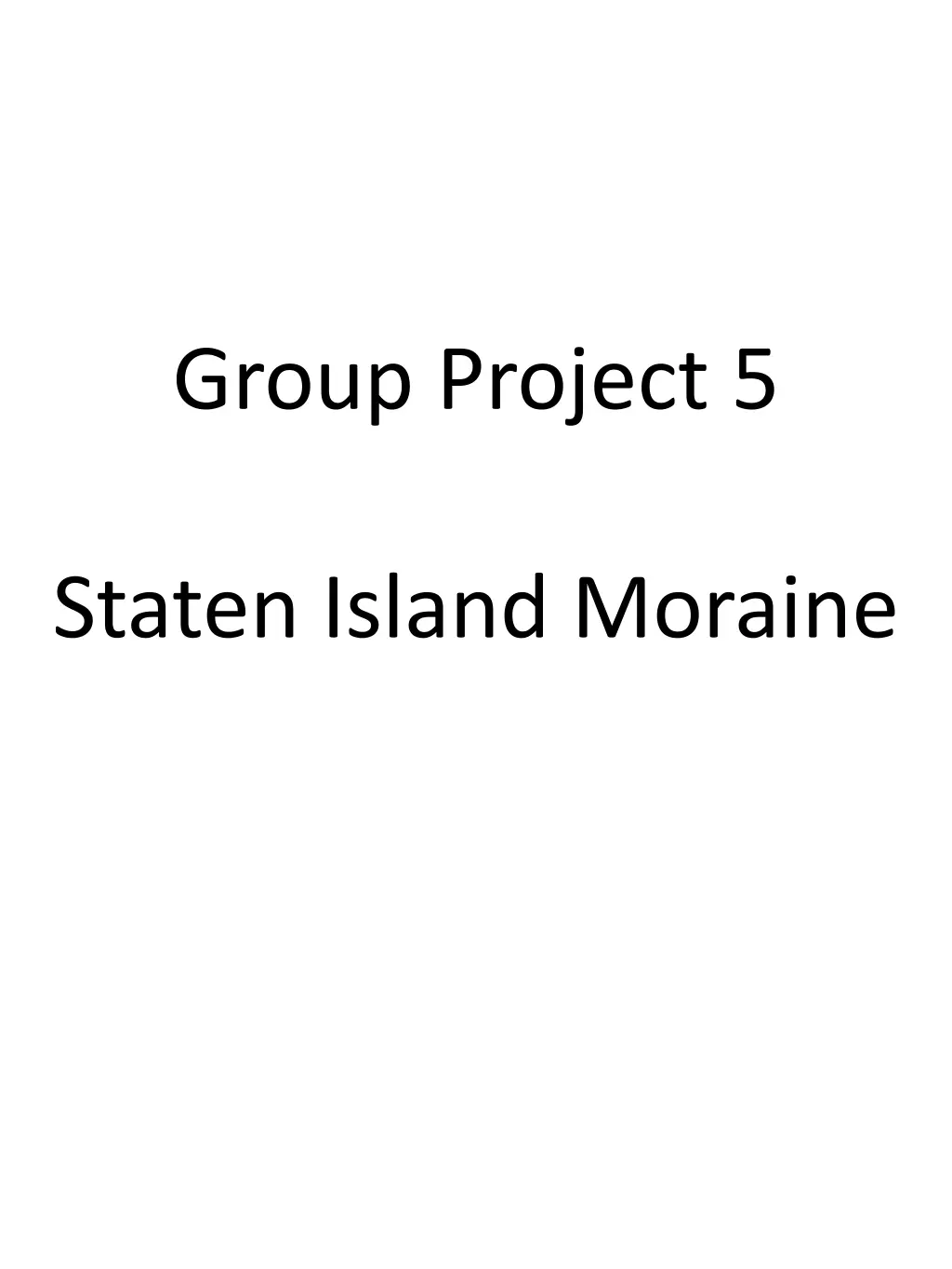
Exploring Moraine Material on Staten Island
Delve into a geological study in Staten Island, focusing on moraine material from different locations. Analyze rock types, size distributions, and source areas, accompanied by visual aids and interpretive insights.
Download Presentation

Please find below an Image/Link to download the presentation.
The content on the website is provided AS IS for your information and personal use only. It may not be sold, licensed, or shared on other websites without obtaining consent from the author. If you encounter any issues during the download, it is possible that the publisher has removed the file from their server.
You are allowed to download the files provided on this website for personal or commercial use, subject to the condition that they are used lawfully. All files are the property of their respective owners.
The content on the website is provided AS IS for your information and personal use only. It may not be sold, licensed, or shared on other websites without obtaining consent from the author.
E N D
Presentation Transcript
Group Project 5 Staten Island Moraine
Group 1 Rocks from Moraine The sample consists of a collection of pebbles taken from the moraine. The fine component was discarded but an attempt was made to preserve the relative abundance and size distribution of the coarse component. 1. Weight each rock, make a histogram of the weights and interpret the results. What is the most common weight range? 2. Sort the pebbles into rock type categories. Use lithologic names if you can. If you have no training in rock identification, sort them into categories based on their color and texture. Take a photo of the result. 3. Mage a histogram of total weights of each category. What category is the most plentiful? 4. Are big or small sizes over or under represented in any category? 5. Interpret the rock type of the most common category in the context of the distance that the major source of that rock type is from the moraine. See attached maps
Group 2 Rocks from Beach near Moraine The sample consists of a collection of cobbles picked up from the from the beach near the moraine (and which presumably eroded out from the moraine). An effort was made to collect as many different rock types as possible. 1. Examine each rock and sort them into igneous, metamorphic and sedimentary groups, laid out on the table. Within each group, sort them into sub-groups depending upon similarity. Take a photo of your result. 2. Assisted by the Instructor/TA, determine the rock type of each cobble. 3. Match up as many rock with possible source areas (as given by the annotated geologic map). What is the most distant rock source from Staten Island?
Group 3 Size Distribution of Moraine Material The sample consists of moraine material from Staten Island. 1. Weigh and record each piece of the sieve (its tare weight ) for future reference. Re-stack the sieve, coarseness increasing upward. 2. Place the moraine sample in the uppermost sieve compartment. Examine it visually and describe it. Take a photo. 3. Put the cover on the sieve and shake it for a while until the size fractions separate. Take a photo of each size fraction. 4. Weigh each sieve and subtract the tare weight to get the weight of each size fraction. Make a histogram of the size fractions and interpret the results.
Group 4 Photos of Whole Moraine Two wide-angle photos of the moraine are provided 1. Load photo GP05_04_01 into Photoshop. Measure the Photoshop size of the compass in the image using and compute a proportionality ratio ? = ? ???? ?? ???? ?????? ???? where the compass measures 52 by 77 millimeters. You can now measure any length in the photo using ?????? ???? = ? ? ???? ?? ???? 2. Load photo GP05_04_02, which is a different part of the same moraine (buth with some overlap). Match up features to develop an approximate distance scale for that photo. 3. How tall is the moraine? What s its overall color?
Group 4, cont 4. Outline a few of the biggest boulders in the moraine and annotate the two images with their dimensions? Describe their color and shape. 5. Identify stratification of the moraine. Is it weak or developed? How thick are the layers? Are they of uniform or variable thickness? Are they flat lying or tilted. Do boulders (and other large stones) preferentially occur in some layers and not others,
Group 5 Close-up Photos of Moraine One close-up photos of the moraine s provided 1. Load photo GP05_05_01 into Photoshop. Measure the Photoshop size of the compass in the image using and compute a proportionality ratio ? = ? ???? ?? ???? ?????? ???? where the compass measures 52 by 77 millimeters. You can now measure any length in the photo using ?????? ???? = ? ? ???? ?? ???? 2. Pick a minimum pebble size so that the image contains 20-50 pebbles of that size or greater. Trace over all these pebbles with rotated ellipses and record their length ?, width ? and area ? = ??2??/4. Use Excel. 4. What fraction of the total area is pebbles? You will need to estimate the total area of the photo, ? = ?2??. 5. Make a histogram of the pebble areas. Are big or small pebbles the most common?
